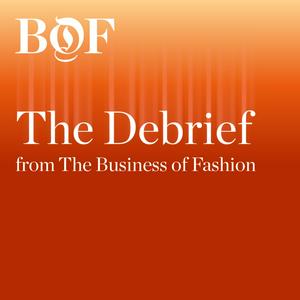How to Future-Proof Your Fashion Career in 2025
The fashion workplace is evolving, shaped by a wave of technological advancements, leadership changes, and cultural dynamics. For many employees, adapting to these changes has become a challenge, while employers must navigate how to foster connection, retain talent, and drive innovation.Executive editor Brian Baskin sits with commercial features editorial director Sophie Soar and senior correspondent Sheena Butler-Young to unpack how businesses can create thriving workplaces in 2025, the role of soft skills in a tech-driven era, and what it takes to re-engage an increasingly disconnected workforce.“In the face of AI and more technology coming in, it is more important to have a human element. What does a human do well? That’s why soft skills are a huge focus,” says Butler-Young. Meanwhile, Soar highlights the growing challenges of employee disengagement, stating, “We are incredibly disengaged as a workforce. Trying to get employees to buy back into what they’re doing and be part of the workplace is going to be really challenging.”Key Insights:The turnover of leadership in fashion is reshaping workplace dynamics. “New leadership means change, even if they're using the same playbook,” explains Butler-Young. “Having someone new at the top of your company tends to affect morale for better or worse, or just makes people feel uncertain.” She adds, “Fashion workplaces are in this perpetual transition this year, which will inevitably shape culture.”In the wake of President Donald Trump’s executive orders targeting corporate DEI programmes, successful DEI strategies in 2025 will integrate horizontally across all business functions, rather than thinking about it as a vertical. “If something is horizontally integrated across the business and is a fundamental aspect of every single core pillar that this business touches upon, it's harder to roll back on those initiatives as a result,” says Soar. Butler-Young adds, “If you as a leader of any kind of organisation appear to flip-flop on your values based on the way the political winds blow, I think that's going to have a harmful effect on your workplace in the long term.”As AI becomes more prevalent, employers are placing greater emphasis on human-centric skills. “In the face of AI and more technology coming in, it is more important to have a human element to it. What does a human do really well? That’s why soft skills are a huge focus,” says Butler-Young. Soar adds, “It’s about engaging a workforce who are constantly striving to think about how they can take this particular tool or opportunity to the next stage and do so with that can-do, positive approach and attitude.”The impact of the attention economy has spread into our work lives. “We are incredibly disengaged as a workforce,” says Soar. “Trying to get employees to buy back into what it is that they're doing and be a part of the workplace is going to be really challenging, especially as they're navigating a hybrid or remote working environment.” Employers, Soar argues, need to address this to optimise their workforce for the future: “It is fundamentally changing the way that we are operating as people as well as employees.”Additional Resources:How to Future-Proof Your Fashion Career in 2025From Trump to Gen-Z, Fashion Faces a Culture QuakeBoF Careers Hosted on Acast. See acast.com/privacy for more information.


